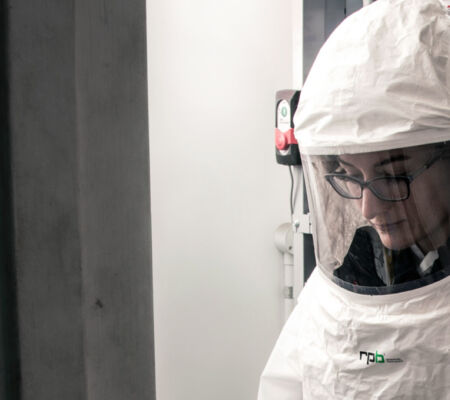
Male and females anatomically have significant differences in the composition of their physical appearance. Because of this, different PPE is required to ensure the right level of protection is maintained.
Back to Articles & Resources View all General Respiratory Protection content
Industrial workforces have been heavily dominated by males ever since they began. Over time, however, we have begun to see changes in these workplaces as the gender balance begins to slowly change, with some industrial trades now being made up of as much as 15% females. Through this growth in diversity and a greater understanding of safety in general, some of the issues that have been created through years of male dominance in these roles are beginning to surface with one, in particular, being personal protective equipment (PPE). Because the majority of workforces have been filled with males for so long, the PPE that has been designed and manufactured is largely aimed at European and American males. This creates significant barriers for females entering these workforces as they are provided with reduced protection and their ability to perform is compromised through PPE that limits them.
Males and females anatomically have significant differences in the composition of their physical appearance. Male bodies on average are taller, heavier, and generally larger. Female bodies on the other hand tend to have wider hips, longer torsos and more angled shoulders. Similarly, with their faces, there are differences with the forehead shape being wider and higher on males and they also have bony ridges present above the eyes. Females have noses that are shorter and narrower with cheeks that are rounder and fuller. What all of this highlights is that every part of the male and female body is different. No matter what part you are looking at, there are differences. With PPE this has been designed off the male anatomy and although there is a range of sizing options available, this does not mean the item of protection has been catered to the differing body and facial shapes or formations that females have, and this is where problems around health and safety along with comfort arise.
When PPE does not fit properly this impacts the user’s performance, comfort and safety. PPE that is too big can hinder the user’s ability to move freely and they risk the PPE damaging their work, by this touching wet paint for example, which then requires rework and causes losses to a business. Items that are too big can create additional weight or force the user to place themselves in positions that create a strain on their body as they attempt to counterbalance the weight. This can cause significant discomfort which leads to fatigue, negatively impacting on the user's physiological and psychological wellbeing while also reducing productivity. Perhaps most importantly, PPE that does not fit the user correctly puts them at risk of exposure to the hazards in the environment such as particulates entering the respiratory system, skin being exposed to chemicals and or creating trip hazards.
One of the biggest health issues with PPE for females is with respiratory protection. In many applications, the primary form of respiratory protection is an N95 mask, which tends to be designed for the facial shape of American men. This means that many women, as well as men of other ethnic groups, will not fit these types of respirators. As many businesses do not complete fit testing to ensure tight-fitting respirators are being worn correctly, many workers are being exposed to the hazards within their environment and breathing in potentially very harmful particulates and contaminants without even knowing.
A solution to tight-fitting respiratory protection troubles has been the creation of the loose-fitting respirators. This utilizes the user's head as the central connection point, either molding to the head with padding and tightened through ratchet systems or a series of adjustable straps that contour to the shape of the user's head. By ensuring the system securely fits the user’s head and that there is positive pressure inside the headtop created by powered or supplied air, this removes the need for a tight fit. This enables the user’s nose, jaw and cheeks to be free of contact and accommodates for all types of face shapes and sizes to be protected. Through this approach, it is possible to have one product that fits all, rather than one size fits all.
While we might be a long way from PPE being treated the same as men’s and women’s clothing with a wide variety of sizing and styles to suit all the different body shapes, there are manufacturers that understand the importance of PPE fitting correctly and they’re taking the necessary steps to ensure they manufacture protection that enables all of its wearers to make it home safely each day.
Works Cited
BCITO. (n.d.). INDUSTRY AIMS TO BOOST WOMEN IN TRADES. Retrieved from BCITO: https://bcito.org.nz/news-and-publications/news/industry-aims-boost-women-trades/
Industry Today. (2020, September 14). Women in the Welding Industry. Retrieved from Industry Today: https://industrytoday.com/women-in-the-welding-industry/
Medical Xpress. (2020, September 16). Personal protective respirator masks (PPE) often do not fit correctly, especially for women and Asian healthcare workers. Retrieved from Medical Xpress: https://medicalxpress.com/news/2020-09-personal-respirator-masks-ppe-correctly.html
Palm Beach Plastics. (n.d.). 7 FEATURES OF A FEMININE FACE. Retrieved from Mardirossian Facial Aesthetics: https://www.palmbeachplastics.com/facial-feminization-surgery-ffs/7-features-of-a-feminine-face/
Trades Union Congress. (2017, April). Personal protective equipment and women. Retrieved from Trades Union Congress: https://www.tuc.org.uk/sites/default/files/PPEandwomenguidance.pdf
